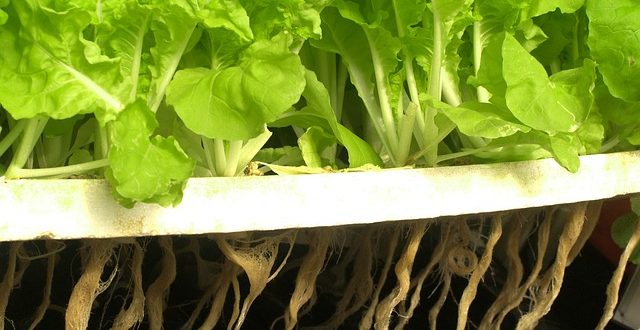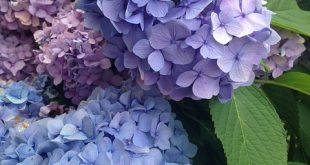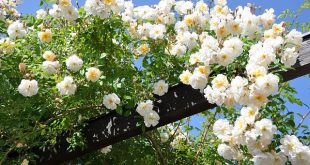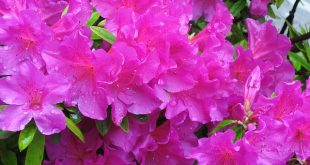Hydroponics by it’s most simple definition is the art of growing plants without soil.
Principles
The plants are supported either in liquid alone or in an inert media such as perlite, vermicolite, clay pebble or rockwool. They are fed by a nutrient solution; this means that the plants do not have to develop a large root system in order to feed. With soil-less gardening you can control and enhance all of the plants basic needs and even have the advantage to ensure the root systems are receiving enough oxygen. When growing plants in soil the plant has to divide it’s energy between upward and downward growth. A hydroponically grown plant uses the majority of its energy growing upwards as all it’s nutrient requirements are being met.
Advantages
Having all the nutrients available benefits the plants by promoting quicker growth and in the case of crop bearing plants, higher yields. Further more, hydroponically grown plants will grow between 2 to 4 times quicker than those grown in soil. For tomatoes, commercial growers have obtained yields per hectare of up to 40 times that of soil grown plants. Due to environmental concerns regarding the reduction of water consumption and the worries of indiscriminate use of nitrates and other fertilizers/herbicides in soil based agriculture, the future of hydroponic methods of cultivation is assured. It dramatically reduces the problems of soil born pests and diseases. Weeding is a thing of the past!
History
The concept of hydroponics has existed for many years. The hanging gardens of Babylon used hydroponics. The US army used the technique to feed soldiers during WW2 on the Pacific islands. The concept is now becoming more popular; commercial crop growers are turning to soil-less cultivation more and more. The speed of growth combined with the control over the growing environment means higher quality crops.
Home Hydroponics
Commercial growers techniques are available to the home gardener. All sorts of kits and equipment are available, all you need to do is add seeds and water! Setting up a system is quick and easy, once running, maintenance consists of monitoring the nutrients and periodically adding more nutrients/water. The system does the work!
Different sized systems are available in numerous configurations. You can grow in any location where there is sufficient light. Systems are suitable for use indoors, in a conservatory, greenhouse, cellar, attic, garage or kitchen. Add a HID (High Intensity Discharge) lighting unit and you can grow literally all year round by ‘simulating’ the weather. You can enjoy fresh fruit and vegetables even when it’s cold and raining outside by altering the time grow lights are on. You can simulate summer and winter day light hours enabling plants to fruit or flower earlier/later in the season.
There are a large number of different systems available but all of them fall into one of the categories below:
Passive Systems
Pot Culture
The cheapest and simplest means to grow hydroponically. Ideal for beginners, simply fill a suitable pot with a soil-less medium and fill a bottom tray or saucer with the nutrient solution by hand. The nutrient will reach the plant using the capillary action in the first stages.
Active Systems
Ebb Flow
Also called flood and drain. Plants grown in this method are often supported in pots filled with clay pebbles which are placed in a special tray. This is regularly flooded to soak the clay pebbles with nutrient solution and then it is allowed to drain back into a holding tank – this cycle is repeated several times a day, when the nutrient drains away fresh air and oxygen are drawn to the root zone of the plants. This is a highly efficient and easy to manage method of soil-less gardening. The longest tomato plant in the world grew using the ebb + flow system. It is listed in the Guinness book of records at 65ft, although it did eventually reach a height of 92ft!
N.F.T (Nutrient Film Technique)
Commonly known as N.F.T. The plants rest in a flat, but gently sloping tray or channel, often without support or using rockwool cubes. The nutrient solution is simply re-circulated around the system with the roots bathed by a constant flow of nutrient feed. As the system run continuously (during daylight hours), the management of the N.F.T systems has to be more diligent than with other systems. Should the re-circulating pump fail the plants will die due to the lack of growing media to hold the water and food for them. However if managed correctly this system (developed in the UK) will out perform all other systems currently available.
Aeroponics
An effective method that involves suspending the roots of the plant being grown in a darkened chamber, where they are misted with a nutrient mix. Due to the high oxygen levels in such a system rapid growth rates are achievable. This system has similar management to the N.F.T systems.
Drip Irrigation
A reservoir of nutrient feed is pumped via drippers to plants usually supported in pots or more often in rock wool cubes or slabs. The excess nutrient may then be re-circulated or allowed to drain away – known as run to waste. Use this excess nutrient to feed your soil-based plants.
 Gardeners Club The Gardeners Club is a free to join online club for everyone with an interest in gardening and gardens.
Gardeners Club The Gardeners Club is a free to join online club for everyone with an interest in gardening and gardens.






